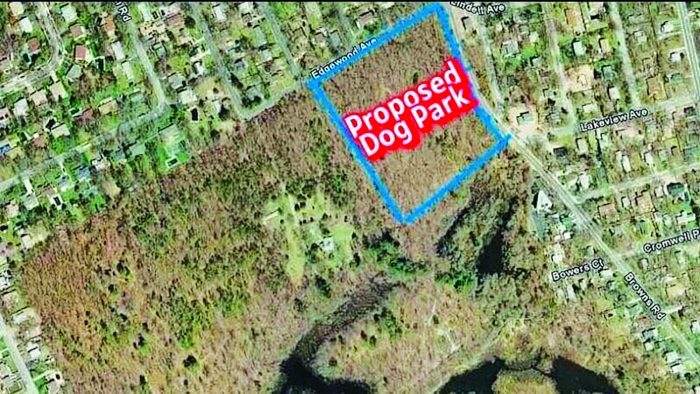Dog park proposal for last forest in Nesconset rejected by Suffolk residents
By Caroline O’Callaghan
During the May 29 Lake Ronkonkoma Advisory Board Meeting, board representatives introduced a proposal for a dog park of about 5-10 acres to be built in Walter S. Commerdingers Jr. County Park forest located off of Browns Road in Nesconset.
Residents chose to express their profound concerns over the threat of deforestation to not only the last untouched forest in Nesconset but all of Long Island’s forests. One of those residents was Mary-Anne Smith, who subsequently started a petition on change.org to spotlight the issue.
In her petition titled Save the Last Forest of Nesconset, Smith asks “the Lake Ronkonkoma Advisory Board and Suffolk County Parks Department to please reconsider the location [of the dog park] and prioritize preserving natural spaces and forest, and utilize other alternative open space options in the area.”
Smith went on to list the potential impacts of building the dog park, including its harm to both wildlife and humans.
Some wildlife in the proposed area are at a higher risk of being harmed than others. They include eastern box turtles, northern long-eared bats and common nighthawks. Other less affected animals listed were resident and migratory songbirds, a pair of great horned owls, deer, turkeys and foxes.
For the human residents of the Browns Road and Edgewood Avenue area, Smith brought to light the risks of developing the space, such as increases in road flooding, pollution run-off, property taxes, air-conditioning and electricity costs of nearby homes and urban heat island effect. Smith also said that the proposed dog park would create a decline in property values.
One of the chief complaints listed on the petition was the legality of the dog park proposal. This is due to the forest being a county park, which requires the approval of the county or park authority for any further development to be done. In order for the proposal to be legal, a
core group of residents or public supporters must first form a demonstration, choose the site of the potential park, create a budget and finally present their own proposal for the dog park to the designated authorities.
Based on Smith’s petition, it is unclear if this process was followed accordingly, which suggests that the proposal may not have been supported by the public in the first place. Smith expressed that she was “not against the idea of [more] dog parks” but rather opposed the unnecessary expulsion of the ecosystem in which the forest plays host to given the limited forests left on Long Island. She also mentioned how the Gibbs Pond Dog Park is less than a mile away from the site. This was to suggest that building a second park in close proximity to Gibbs would be redundant.
Ultimately, the petition amassed over 700 signatures, resulting in the decision of policymakers to no longer develop the Nesconset forest into a dog park. Smith thanked the signers, stating, “because of your support, our voices were heard!”
For more information visit the website Save the Last Forest of Nesconset: www.change.org







